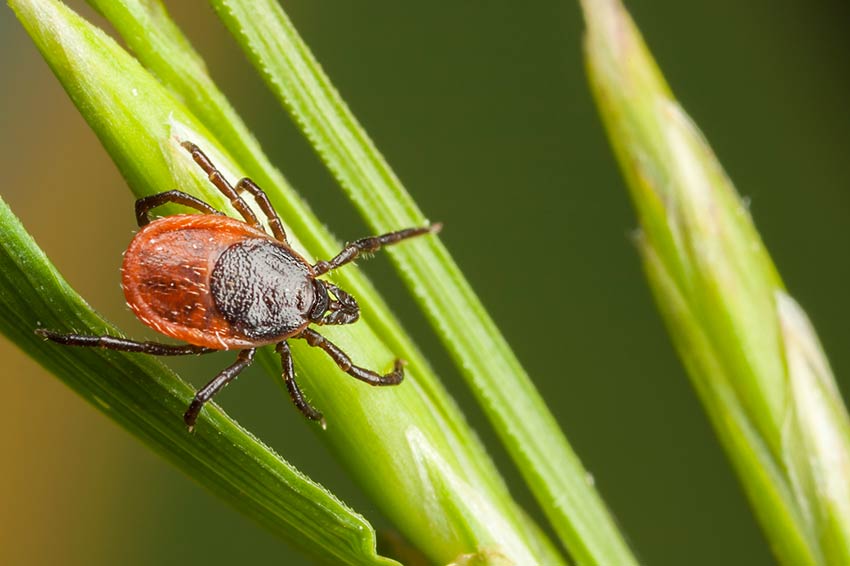Lyme disease is a bacterial infection that is spread to humans by infected blacklegged ticks. Ticks are tiny spider-like insects found in woodland areas and tall grass. They may also be found in gardens or parks where this kind of vegetation exists. Ticks feed on the blood of mammals, including humans. To do this they climb onto the animal or human and usually find a place where the skin is soft and not exposed. Ticks are very small and their bites are not painful, so you may not realize that you have one attached to your skin. In fact, tick bites often go unnoticed and the tick can remain feeding for several days before dropping off. The longer the tick is in place, the higher the risk of infection.
Lyme disease is caused by the Borrelia burgdorferi bacteria. The bacteria are present in the digestive systems of many different animals including mice, deer, pheasants and blackbirds. If a tick bites an animal that has the bacteria, the tick can also become infected. The tick can then transfer the bacteria to a human by biting them and feeding on their blood.
Once infected, the bacteria move slowly through your skin and into your blood and lymphatic system. The earliest and most common symptom of Lyme disease is a red circular rash that develops around the area of the bite, 3-30 days after someone is bitten. The rash is often described as looking like a bull’s-eye. You may also experience flu-like symptoms, such as tiredness, headaches and muscle or joint pain. Lyme disease can affect your skin, joints, heart and nervous system.

